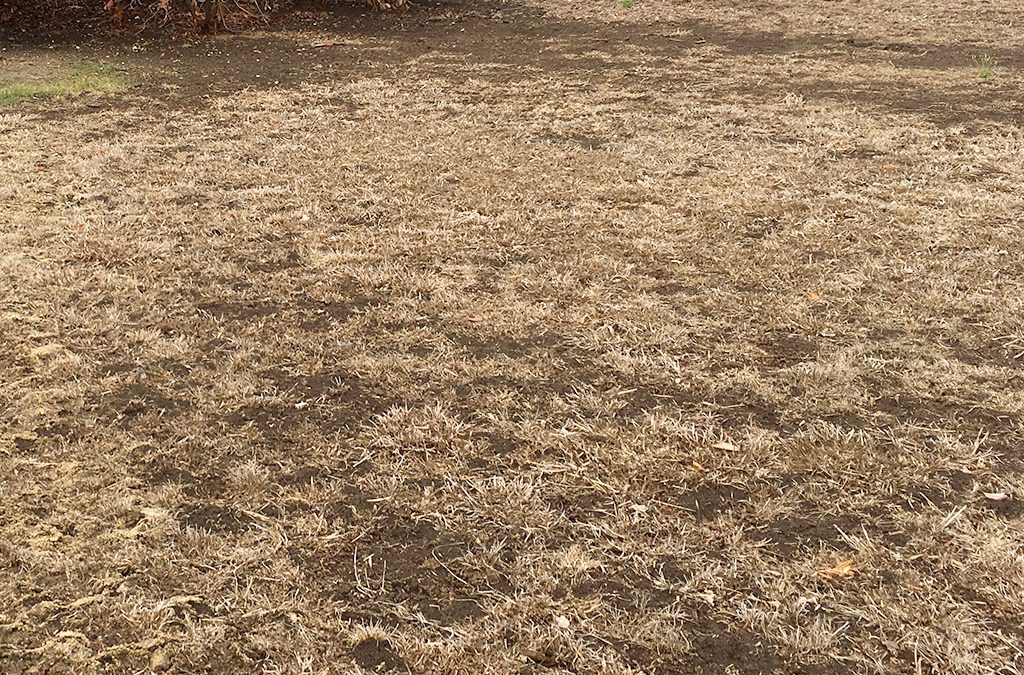- November 20, 2020
- Posted by: Dave Kurlan
- Category: Understanding the Sales Force

I just love it when our lawn looks gorgeous – thick, lush, and green, green, green. Getting it looking that good requires fertilizing, aerating, thatching, over seeding, and frequent mowing, all things better suited to the landscaping company than me. Of course, some sun and water help too. And even with an irrigation system, by the middle of the summer, areas of our lawn begin to look like crap. Not to worry though. By mid fall, the lawn looks its absolute best. Yup, my lawn never looks better than it does on November 1. Right before it snows and turns brown for the winter! You have to admit, that’s a lot of work and expense for a lawn that looks perfect for all of 6 weeks – 3 weeks in the spring and 3 weeks in the fall!

Great looking spring lawn.

Crappy looking summer lawn
Because my lawn looks its worst on August 1 and its best on November 1, it has a lot in common with most sales organizations. A sales team looks its best on January 1, when every opportunity in the pipeline is a possibility and forecasts predict a banner year. It looks its worst just a week earlier, when on December 23, sales leaders defend the team’s sub-par performance to the CEO and explain why 57% of their salespeople failed to hit quota – again! It’s easy to explain why the lawn fails, as dry, hot summers will do that. But why do sales teams continue to fail, year after year, regardless of industry, and in every economy? Why don’t the numbers improve? Why don’t more salespeople jump from C’s to B’s? From B’s to A’s? From D’s to C’s? The answers – and there are plenty – are evasive. But let’s try!
We can certainly pin some of the blame on sales managers. My last two articles explain many of the problems contributing to ineffective sales management. Read about crappy sales managers and then read the follow-up article about crappy coaching.
We can certainly pin some of the blame on salespeople. Why don’t they try to improve? Why don’t they invest in sales self-development? Why don’t they read more books and articles, watch more videos, listen to more audio and push themselves out from their comfort zone? Why don’t they practice?
After 35 years in this business, I still don’t understand why sales, as a profession, includes so many ineffective salespeople. Based on data from Objective Management Group (OMG), who has evaluated and assessed 2,040,355 salespeople, 50% of all salespeople suck. Take a look at the image below where I have isolated the bottom 50% of all salespeople. This screen shot represents the percentage of those weak salespeople who have the ten tactical selling competencies as strengths:

After seeing these percentages is it any wonder why half of your salespeople fail to hit quota? Don’t think it could get any worse? Take a look at what happens when we look at the bottom 10% where it’s clear that the only thing some of them are capable of is making friends and presentations:

These ten selling competencies are ten of the twenty-one sales competencies that OMG measures. You can see them all, filter by industry and sales percentile, and even see how your salespeople compare. Data on OMG’s 21 Sales Core Competencies.
We can pin some of the blame on history. To a certain degree, C Suite executives are conditioned to accept these year-end results and when they are disappointed yet again, they don’t raise hell, don’t fire the sales leaders, and don’t storm out the door. They simply aren’t surprised any more. Failure is baked in.
You know what it takes to make a lawn look great and from experience I know what it takes for a sales team to become great. Companies that evaluate their sales teams, provide effective sales training, embrace sales process, train their sales managers to coach, get sales selection right and improve their sales cultures, yield huge gains in sales and profits. Yes, margins increase too. That’s what happens when salespeople learn to sell value instead of price.
With that in mind, we can certainly assign a lot of blame on company owners, CEO’s and senior sales leaders who don’t take those steps and/or don’t take those steps seriously.
The conversation on the LinkedIn post for this article has some fantastic additional reasons why and took my lawn analogy even further. The best one so far is from Rocky LaGrone who said, “…Don’t forget about pesticides for those pesky insects, pre-emergent for unwanted weeds, over watering, and fungus. Those are the same in sales as mediocre sales leaders and salespeople. It’s the equivalent to making excuses and accepting them. Add lack of understanding of how to bring value and premature presentation and you have a baron landscape in sales. With zero effective coaching you might as well not mow! The layman landscaper cant see the early warning signs of root damage or infestations of grubs no more than the layman sales executive can’t see their rotting sales foundation without measuring the right metrics at the right frequency. Most people react to their grass and don’t pay attention to the roots. Healthy roots produce healthy plants and the same is true for sales. The fundamentals never change. It’s the application of the fundamentals that make the difference. A professional landscaper will start with a soil sample and analysis. Why wouldn’t a sales executive start with an analysis of their salesforce?”
There are a lot more great comments like this one at the LinkedIn post.
There’s no excuse for not weaponizing your sales teams and equipping them with every appropriate sales strategy and tool to leverage their ability to close opportunities they have routinely allowed your competitors to retain, steal or close.
As Michael Jackson famously sung in his timeless 1980’s hit, Man in the Mirror, Make a change. Start with the [person] in the mirror.

